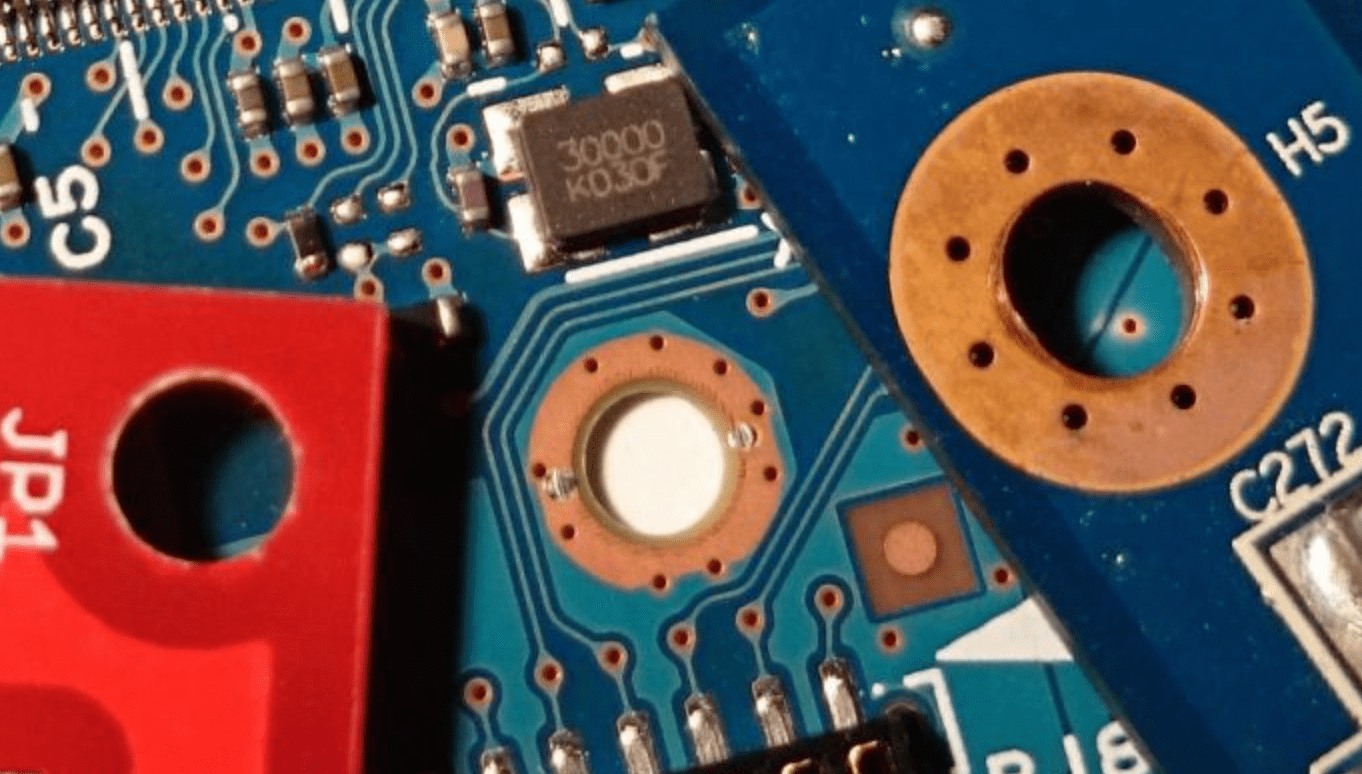PTH (Plated Through Hole) and NPTH (Non-Plated Through Hole) are two commonly used hole types in PCB design. They play an important role in the structure and function of PCB.
This blog post will talk about the defination of "PTH pcb" and "NPTH pcb" technologies and the critical differences between them.
PTH is plate through hole technology where holes are drilled through the PCB and the conductive material is typically copper. This method creates an electrical connection between different layers on the board. PTH is needed to mount electronic components which have leads to pass through the board and are soldered and electrically joined across the layers of the PCB.
A PTH is created in several steps: drilling holes at specific locations, removing debris from the holes and electroplating with copper. The copper plating strengthens the mechanical bond of the component leads to the PCB and also improves the electrical conductivity over the multiple layers of the board.
PTH technology is applied for designs which require high reliability and durability, for example in aerospace, military and medical devices. Its ability to provide strong electrical connections and able to withstand mechanical stress makes this material a favorite for large, multi-layered PCBAs where performance along with longevity are important.
NPTH, Non-Plated Through-Hole in a PCB, refers to a hole without copper in the borehole wall. Unlike PTH, NPTHs are used mainly for mechanical purposes rather than electrical connections. Common uses are to mount parts, to align the board with other components or to provide vias for screws & bolts holding the PCB in place.
NPTH manufacturing involves drilling holes to specified dimension without electroplating. This absence of plating means NPTHs are not intended for soldering components. They serve mainly to physically assemble the PCB into sytem or to align it with other parts.
NPTH is required for designs that require precise positioning and secure mounting.It is a simple solution for non-electric connections, positioning components correctly and securely without conductor paths. This makes NPTH mandatory for simple and complex PCB design and in combination with PTH to achieve required mechanical integrity and layout precision.

The table below illustrates the main differences between PTH and NPTH:
| Feature | PTH (Plated Through-Hole) | NPTH (Non-Plated Through-Hole) |
|---|---|---|
| Purpose | Electrical connectivity; allows component leads to pass through and be soldered for circuit continuity. | Mechanical purposes such as mounting, alignment, or as vias for non-conductive hardware. |
| Manufacturing Process | Drilling followed by electroplating with a conductive material, usually copper. | Drilling holes to specified dimensions without subsequent plating. |
| Applications | Essential in multi-layer PCBs for strong electrical connections across layers; used in high-reliability fields like aerospace and medical devices. | Used for precise component positioning and secure mounting in both simple and complex PCB designs. |
| Cost | Higher due to the additional plating process required for conductivity and strength. | More cost-effective as it skips the plating process, suitable for its non-conductive roles. |
| Durability and Reliability | Offers enhanced durability and reliability for electrical connections, capable of withstanding mechanical stress and thermal cycling. | Provides necessary mechanical stability and precision for the physical assembly of the PCB, though not involved in electrical connections. |
Deciding whether to use PTH (Plated Through-Hole) or NPTH (Non-Plated Through-Hole) technology in your PCB design hinges on the specific requirements of your project. Here are key considerations to guide your choice:
Use PTH if your design requires robust electrical connections between multiple layers or for component leads that need to be soldered to the board. PTH is ideal for circuits that demand high reliability and conductivity.
Use NPTH if the project involves mechanical mounting or alignment without the need for through-board conductivity. This includes cases where components or the entire PCB need to be secured to a chassis or enclosure.
PTH is suited for complex, multi-layer PCBs such as 10 layer pcb where interlayer connectivity is crucial. Its ability to maintain signal integrity across several layers makes it indispensable for sophisticated electronics.
NPTH is often found in simpler designs or in parts of a PCB that require precise alignment or mechanical fixation without electrical connection.
PTH processes add to the production cost due to the electroplating step. Consider this if your project has a tight budget but requires through-hole conductivity.
NPTH can be more cost-effective for projects where the primary concern is mechanical assembly or alignment, saving on unnecessary plating costs.
Learn more about factors that Impact The Cost of PCB Fabrication.
Choose PTH for environments subject to high stress or where long-term reliability is critical. The additional mechanical strength provided by the plated holes can be crucial.
Opt for NPTH in less demanding conditions or where the primary need is for physical mounting. Without the stresses of electrical connectivity, NPTH can suffice.
Choosing between Plated Through-Hole (PTH) and Non-Plated Through-Hole (NPTH) is a big part of making a good PCB for your project. PTH is great for making strong electrical connections and making your project last longer. NPTH is good for when you need to put parts together without needing electricity to flow through the holes.
At VictoryPCB, we're here to help you with your PCB choices. Our team can guide you on whether to use PTH or NPTH for your project. We're all about helping you make your PCBs better and making sure your project works well. Get in touch with VictoryPCB today via sales@victorypcb.com or call +86-755-86339147. We're ready to help you make smart choices for your PCB, making sure your project stands out.
By continuing to use the site you agree to our privacy policy Terms and Conditions.
Recruit global agents and distributors Join us